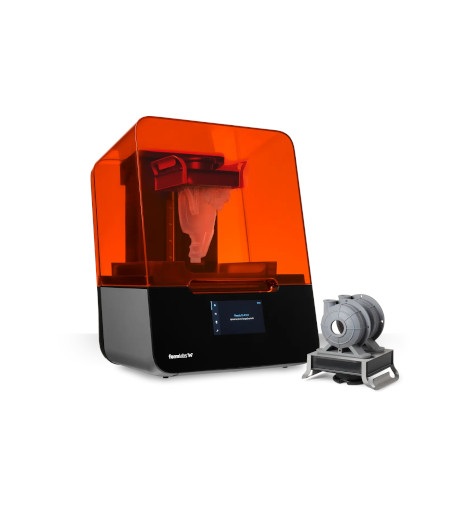

Wherever you are commercially, there will come a point where it is necessary to go from an idea to a reality and to create a prototype that can be tested.
The question is: how to go about this?
Our low-cost methodology saves you money because we do not focus initially on product design but on proof-of-concept engineering. We make a prototype, test it and if necessary, develop it so that it works as well as possible. Our focus is on creating a product that works, aesthetics come later.
"The biggest emotion in creation is the bridge to optimism..."
Brian May - Lead guitarist of Queen, who designed and made his own special-purpose electric guitarTo build a first-prototype or proof of concept, we do not necessarily need to create detailed engineering drawings (that is, 2D dimensioned drawings) because as soon as the device is made for the first time, it is likely that something will need to be developed or altered and the drawings will become obsolete. We often start with mock-ups as part of pilot studies and then progress to a functional prototype once the uncertainties have been resolved.
We use a wide variety of methods to solve technical problems and work out the best way to create an innovative product including sketching and mock ups. But 3D modelling and printing has transformed the way we work in recent years.
We can quickly 3D model an idea, print it out and try it so in reality CAD is an integral part of almost every step of the process. We often make scale models or full scale models in plastic before making them in steel or aluminium.
“Computer-aided design (CAD) is absolutely brilliant, but really good engineers always draw by hand first. We sketch and our team always make rough and ready crude prototypes at the beginning, with cardboard, gaffer tape, MDF, Plasticine, and PVC tape.”
James Dyson - (source: http://startups.co.uk/james-dyson-dyson/)Once the device is working well the next step is to see how it can be redesigned as a product.
Our recent investments in state of the art technology have revolutionised our manufacturing processes.
The Inventions Factory is thrilled to announce the recent acquisition of the Form 3, a cutting-edge 3D printer from Formlabs. With its state-of-the-art technology, the Form 3 empowers us to revolutionize our manufacturing process. This sophisticated 3D printer boasts precision and versatility, utilizing advanced stereolithography (SLA) technology to deliver high-resolution prints with exceptional surface finish.
The Form 3's capabilities extend beyond traditional 3D printing, offering a wide range of materials suitable for various applications including printing of resin moulds for injection moulding. Its precise layering and intricate detailing enable us to produce intricate prototypes and functional parts with unparalleled accuracy.
One of the key advantages of the Form 3 is its ability to facilitate small-batch manufacturing at a remarkably low cost, allowing us to respond swiftly to market demands and rapidly iterate designs. This acquisition aligns seamlessly with our commitment to innovation, efficiency, and maintaining a competitive edge in the ever-evolving landscape of product development.


To complement our new formlabs printer we have further expanded our range of services with the purchase of the TRAVIN TP1 Injection Moulding Machine. This offers a sophisticated solution tailored for the swift realization of prototypes and small-batch plastic production.
Harnessing the power of injection moulding, this machine excels in precision manufacturing by injecting molten plastic into a mould cavity to intricately shape components. Its intuitive interface and advanced controls make operational adjustments a seamless process.
With the capability to handle various thermoplastic materials, the TP1 ensures adaptability to diverse project needs, providing a reliable means of creating detailed plastic components with consistent quality.
Injection moulding, a process renowned for its efficiency, speed, and cost-effectiveness, is particularly well-suited for high-volume production of identical plastic parts with tight tolerances. The TP1 excels in prototyping, enabling us to iterate and test designs rapidly, while also catering to our clients who are seeking a nimble solution for small-batch plastic component production without extensive tooling changes.
In essence, the TRAVIN TP1 Injection Molding Machine stands out as an advanced and versatile tool, facilitating a streamlined and efficient transition from design concepts to tangible plastic prototypes and limited-scale production runs.
Great job on the prototype! it works as you described on the manual…..I am satisfied with the work and feel that we can proceed to the next phase in the development of the prototype
Dr. Sipho Mgidlana